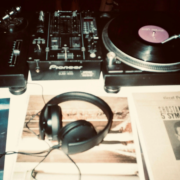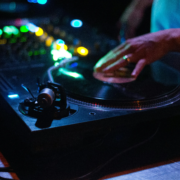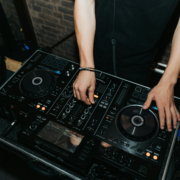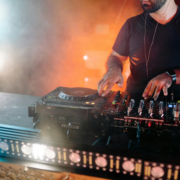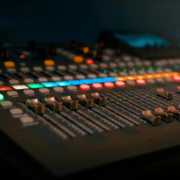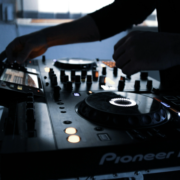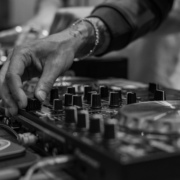Remixing has become an essential skill for DJs and music producers. Whether you’re adding your unique spin to a classic track or creating a fresh dancefloor anthem, having the right tools is crucial for achieving professional results. In 2024, the technology available for making remixes has never been better, with powerful software, hardware, and plugins that can transform your ideas into reality.
If you’re ready to take your remix game to the next level, check out mp4remix.com for more tips, tools, and resources to elevate your music production skills.
1. Best DAWs (Digital Audio Workstations) for Remixing
A reliable DAW is the backbone of any remixing workflow. These platforms allow you to edit, arrange, and manipulate audio to create something entirely new.
- Ableton Live 11
- Known as the industry standard for DJs and producers, Ableton Live offers unmatched flexibility for remixing.
- Features like Warp Mode allow you to easily time-stretch and sync tracks, while the session view is perfect for experimenting with loops and samples.
- Includes built-in tools like Drum Rack and Simpler for adding beats and effects.
- FL Studio 21
- Ideal for beginners and experienced producers alike, FL Studio’s intuitive interface makes it easy to remix tracks.
- The updated Audio Editor and Time-Stretching Tools in 2024 enhance its capabilities for creating unique remixes.
- Packed with plugins like Harmor and Gross Beat for manipulating audio creatively.
- Logic Pro
- A favorite among Mac users, Logic Pro offers advanced tools for remixing, including Flex Time for precise audio editing and a wide range of built-in instruments.
- Its Live Loops feature mimics Ableton’s session view, making it more DJ-friendly than ever.
2. Top Hardware for Remixing
While software is essential, the right hardware can make your remixing process more intuitive and hands-on.
- Akai Professional MPC One+
- A standalone music production device with powerful sampling capabilities, perfect for remixing on the go.
- Features touch-sensitive pads, MIDI compatibility, and advanced sample manipulation tools.
- Pioneer DJ DDJ-FLX10
- This controller bridges the gap between DJing and remixing by offering Stem Control that allows you to isolate vocals, drums, and basslines from tracks in real time.
- Integrates seamlessly with Rekordbox and Serato, giving you more control over your remixes during live performances.
- Native Instruments Maschine+
- A powerful groove production tool that combines hardware and software.
- Offers advanced sequencing, sampling, and sound design capabilities for creating remix-worthy beats and loops.
3. Must-Have Plugins for Remixing in 2024
Plugins can expand your creative possibilities, helping you reshape and enhance your tracks in unique ways.
- Serato Sample
- A powerful sampler plugin that makes chopping, looping, and key-shifting audio incredibly easy.
- Perfect for extracting specific elements like vocals or melodies from tracks for remixing.
- iZotope Stutter Edit 2
- Designed for adding glitchy effects and intricate transitions, this plugin can give your remix a polished and modern edge.
- RC-20 Retro Color
- Adds vintage-style textures and character to your remixes, perfect for creating lo-fi or nostalgic vibes.
- Output Arcade 2.0
- Offers an ever-growing library of royalty-free loops and samples that you can manipulate and use in your remixes.
4. Best AI Tools for Remixing
AI-powered tools are revolutionizing the way DJs and producers create remixes, making tasks like stem separation and audio enhancement faster and easier.
- Stem Creator by Audionamix
- Automatically isolates vocals, drums, bass, and other elements from any track, giving you complete freedom to remix.
- Endlesss Studio
- A collaborative music platform that uses AI to help you create loops and build tracks in real time, perfect for remixing with other artists.
- LANDR Mastering
- After completing your remix, use this AI-powered mastering tool to ensure your track sounds polished and professional.
5. Sample Libraries and Loops
High-quality samples and loops are the foundation of many great remixes. Here are some go-to resources for 2024:
- Splice
- A subscription-based platform offering millions of royalty-free samples, including vocal chops, drum loops, and synth patches.
- Perfect for finding fresh sounds to incorporate into your remix.
- Loopmasters
- A vast library of genre-specific loops and samples, including exclusive packs from renowned producers.
- Noiiz
- Offers both a sample library and a cloud-based plugin for instant drag-and-drop functionality.
Tips for Choosing the Right Tools
With so many options available, how do you know which tools are right for you? Here are some things to consider:
- Budget: Start with affordable or free tools if you’re a beginner. Many DAWs and plugins offer free trials.
- Compatibility: Ensure your hardware and software are compatible with your existing setup.
- Workflow: Choose tools that fit your style of remixing, whether that’s live loop-based performances or studio-focused production.
Final Thoughts
The right tools can make all the difference in creating standout remixes that captivate listeners. From powerful DAWs like Ableton Live to innovative AI tools and sample libraries, 2024 offers a wealth of options for DJs and producers.
Ready to dive into remixing? Visit mp4remix.com for more expert tips, tutorials, and gear recommendations to help you level up your remixing skills.
Start exploring these tools today and take your remixes to the next level!

